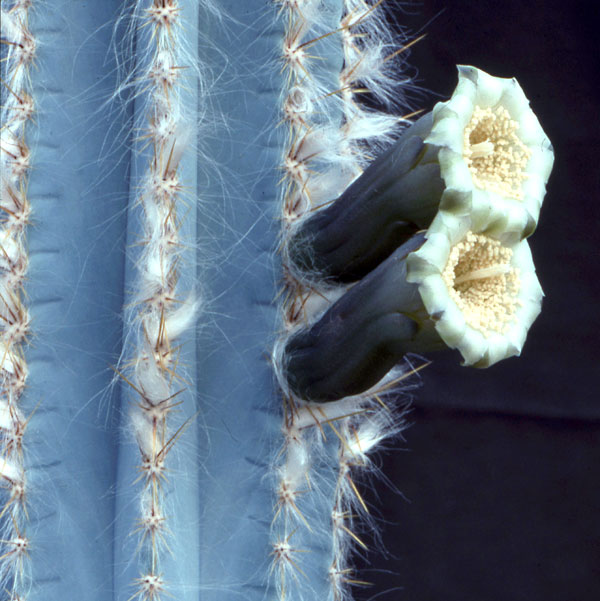Columnar cacti add height and variation to a collection. Their appearance is diverse, some have dense spination of various colours while others have hairy stems. The epidermis of the body can sometimes be blue, as in this species, making a dramatic addition to a group of cacti.
The genus Pilosocereus is comprised of nearly 50 species, the majority of which come from Brazil but others can be found growing naturally in the Caribbean, Mexico, and northern South America as far south as Peru in the west. They are usually large-growing shrubs or trees, characterised by their nocturnal bat-pollinated naked flowers which are sometimes produced from areoles that can be modified with extra spines or bristles.

Fig. 1 Pilosocereus pachycladus in flower
P. pacycladus is a large-growing branching tree that is widespread in Brazil. In some places it makes forests which dominate the landscape. As a young plant, it already has a lovely blue epidermis, so it is worth growing even if you do not have space to grow it to flowering size. Given a big pot or a free root run, the stems grow quickly and can flower when two metres tall. It is the easiest species to find for sale in garden centres where you can often find small pots each containing a number of seedlings of this species.
Like many Brazilian cacti, this plant needs a warmer place in winter than most cacti but if kept dry then 10°C is enough to keep the plant unmarked. For best results, it needs a generously sized pot placed in a warm sunny location with regular watering and feeding in warm weather;
Graham Charles
No part of this article may be reproduced without permission. Copyright BCSS & the Author 2020
